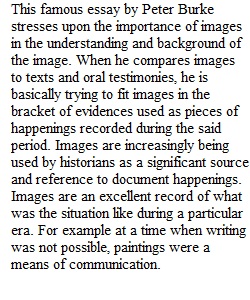


Q 1. Read the Introduction to Peter Burke's Eyewitnessing: The Use of Images as Historical Evidence . Pay particular attention to his argument that, "... images, like texts and oral testimonies, are important historical evidence." What does he mean by that statement and by the statement, "[Images] record acts of eyewitnessing"? 2. Based on what you learn from Burke's Introduction, SUMMARIZE in your own words what historical context is and how it is useful when analyzing a work of art. Do not quote the passage directly or copy and paste from it or other sources - you will not receive any points if you do that! 3. Choose ONE work of art from the Metropolitan Museum of Art's collection of Egyptian art found here. (Links to an external site.)Links to an external site. Don't forget to fully identify the object at the start of your discussion. Include the object's Accession number and a jpeg of it as well! Using your textbook, the videos linked in the Chapter 3 Outline, and/or the internet* (see Note, below), research the historical context for the artwork you chose. 4. In one paragraph, discuss how historical context (aka what was going on in history AT THE TIME your artwork was made) influenced the choices the artist made and the imagery he/she included in the work. Remember! works of art made at this time were created with specific intent and for a specific purpose - they DO NOT express the subjective feelings of the artist. Instead, they express concepts and ideas familiar to the people of time using imagery that would've been widely understood and was culturally specific.
View Related Questions